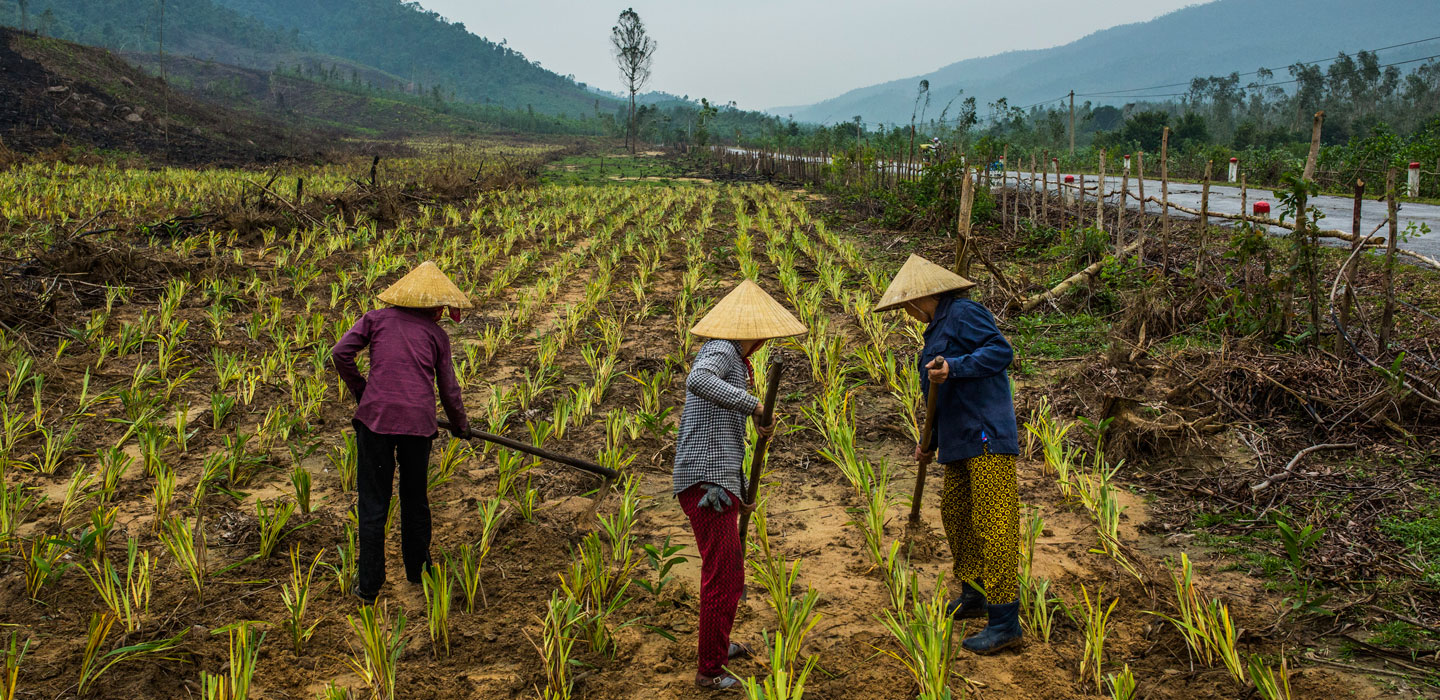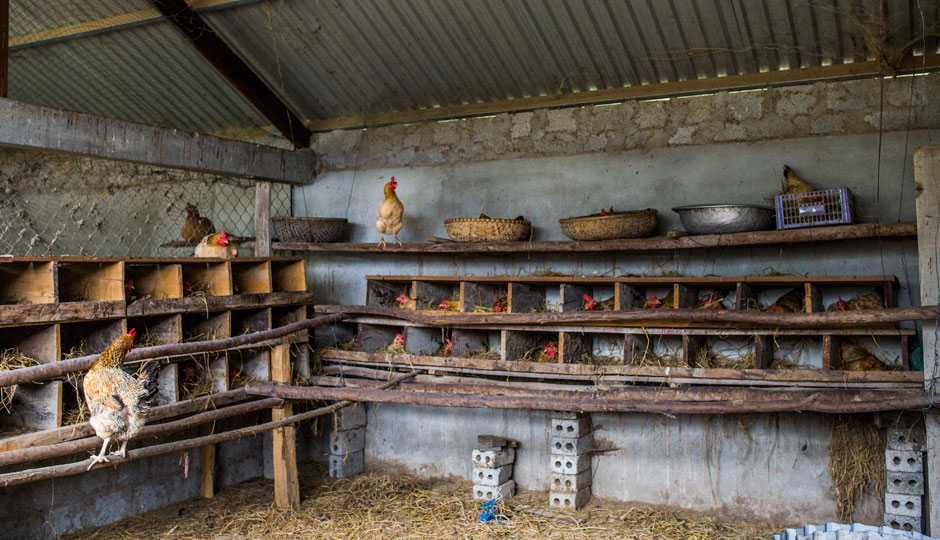Free-range chicken farming a success in remote Viet Nam
IFAD Asset Request Portlet
Asset Publisher
Free-range chicken farming a success in remote Viet Nam
Estimated reading time: 3 minutes
©IFAD/Minzayar Oo/Panos
At first, when Nguyen Thi Bich decided to try her hand at highland chicken farming, she didn’t quite know what to expect.
She was no stranger to raising chickens. She’d grown up on a small farm, and she had always helped her family where she could. But they’d always struggled to keep their animals healthy, leaving them with just enough for themselves – and an almost non-existent income. It had always been like that for other households in the area, too.
Then in 2015, the IFAD-supported SRDP project came to Thanh Son, her small hamlet in the Quang Binh province of Viet Nam. The SRDP had a plan for highland chicken farming, a model that makes use of the extensive hills and forests in the area. It seemed to be an ideal fit for the project’s goals: to help small-scale farmers in her region adopt sustainable agricultural techniques that could protect the local environment while also being scalable enough to eventually help them join larger value chains.
But, as one of the first farmers in her area to join the project, Nguyen Thi Bich started small. With the SRDP’s help, she invested some money and began raising chickens in her three-hectare garden on a hillside.
She raised about 500 chickens at first. After about three months, they had grown well and adapted to the local environment, and she was able to sell them for about VND 20 million (US$919.00). Having realized the economic potential, she decided to invest in raising a bigger flock. At the Lunar New Year in 2017, her family sold about 1,000 chickens, weighing between 1.5 tonnes and 2 tonnes in total and bringing in a profit between VND 40 million and VND 50 million (about US$1768 to US$2200).
Nguyen’s success has only grown from there. After years of persistently following this model, her family can afford to raise three batches each year, with more than 1,000 chickens in each batch. They have moved up into the middle class, and her children now have access to a proper education.
Not far from Nguyen’s residence lies the house of Nguyen Thi Hoai Duc. Nguyen Duc now follows the same highland model, but on a smaller scale. And like many in the area, she has also seen her family’s income increase substantially.
“I noticed that Nguyen and some other households were raising chickens quite leisurely and still managing to earn a lot of money, so my husband and I decided to invest in this chicken farming model as well,” she says.
 |
| Sustainable Rural Development for the Poor Project in Ha Tinh and Quang Binh Provinces (SRDP) - November 2017 ©IFAD/Minzayar Oo/Panos |
Soon, more and more villagers began adopting the model – and they quickly formed themselves into a cooperative, with Nguyen Thi Bich and Nguyen Duc among the key members. With support from the SRDP, they put together a long-term business plan and signed a contract to supply seedling chickens and purchase products from large livestock enterprises. As a result, the group’s production and business activities have expanded rapidly.
Nguyen Thi Bich attributes their success to maintaining high standards. The chickens are allowed to roam freely for much of the day, feeding on maize, insects and natural grasses. This keeps the chickens healthier – and the investment costs much lower – than in typical industrial chicken farming. This free-range lifestyle also produces higher-quality chicken meat that, research has shown, many customers prefer over industrially raised chicken.
Today, the cooperative has 14 members. Twelve of them, including all four founders, are women. The members raise an average of three batches of chickens per year. Each participating family typically raises about 1,000 chickens per batch, which – assuming all the chickens are healthy – translates into a total group income of about VND 380 million (around US$16,000). With SRDP’s help, the cooperative has also been able to re-invest some of these proceeds into key upgrades, such as repairing and building new breeding facilities, that have helped them improve their production even further.
Thanks to this income, the households participating in the cooperative have seen their economic standing improve significantly. To date, two of the five participating households have officially transitioned out of poverty, and the other three households now have substantially larger incomes too.
The cooperative’s success has also caught the attention of regional agricultural groups.
“This chicken raising model is contributing significantly to the growth of the agricultural field. This confirms that this is an efficient commodity production model that helps to develop the social economy in Quang Binh,” says Le Cong Toan, chair of the Quang Binh Farmers' Association. “Lands are utilized, more jobs are created to increase income for labourers and poverty is reduced while also enriching people’s lives.”
For Nguyen Thi Bich and the other residents of Thanh Son, this is a very welcome change.
Publication date: 29 July 2020